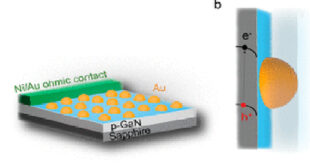Significance
Quantum key distribution (QKD) protocols offer the promise of secure communication based on the principles of quantum mechanics, leveraging the quantum properties of particles to enable secure key exchange. However, as with any technology, these systems are susceptible to errors, both in state preparation and measurement, that can compromise their security. A recent study published in the Journal of the Optical Society of America B by Bhavana Panchumarthi, Abby Stephens, and led by Professor Mark Beck from the Department of Physics at Reed College in Portland, presented a novel approach to detect correlated errors in QKD systems. This approach, based on loop SPAM tomography and implemented in a Twin-Field Quantum Key Distribution (TFQKD) system, represents a significant step forward in ensuring the integrity and security of quantum communication.
Quantum-state tomography (QST) and quantum-detector tomography (QDT) are fundamental techniques in quantum information science. QST aims to estimate the density operator of an unknown quantum state by performing a series of measurements with perfectly calibrated detectors. Similarly, QDT estimates the positive-operator-valued measure (POVM) that describes a detector by probing it with perfectly characterized quantum states. However, in real-world experiments, the existence of perfectly calibrated detectors and perfectly characterized states is a utopian assumption. Invariably, errors occur in both state preparation and measurement, which are collectively referred to as state-preparation and measurement (SPAM) errors. To address these errors, techniques have been developed for estimating the quantum operators characterizing both the state and the measurements in a self-consistent manner. Loop SPAM tomography is a recent advancement in the field, capable of detecting certain types of SPAM errors without explicitly reconstructing the state or measurement operators. This technique has been theoretically described for N-qubit systems and experimentally demonstrated for 1- and 2-qubit systems. Its power lies in making minimal assumptions about the states and measurements, relying only on knowledge of their underlying Hilbert-space dimensions. It achieves this by examining self-consistency within an over-complete set of measurements.
The importance of detecting correlated errors in QKD cannot be overstated. Consider a QKD system in which Alice and Bob aim to share a secret key. The security of the key exchange relies on the assumption that their measurements are independent and that no eavesdropper has tampered with the quantum states. However, correlated errors can lead Alice and Bob to believe their key is secure when it is not. Loop SPAM tomography has been demonstrated as a means to detect such correlated errors, thereby highlighting vulnerabilities in the system.
In addition to traditional QKD protocols, MDI-QKD offers an alternative approach. In MDI-QKD, Alice and Bob prepare independent states, and a joint measurement is performed on them by a third party, typically referred to as Charlie. The key advantage of MDI-QKD is that Alice and Bob do not need to trust Charlie; their key security remains intact even if they do not know Charlie’s measurement settings. Detecting correlated errors in an MDI-QKD system is essential, as these errors could result from an eavesdropper’s interference or hardware/software anomalies.
The authors experimental was based on TFQKD, which extends the range of QKD systems by utilizing weak coherent states and post-selecting measurements on single photons. TFQKD has been shown to be capable of transmitting secure keys over long distances, even exceeding the repeaterless secret key capacity. While the primary goal of their experiment was not to establish a long-distance TFQKD system, it aimed to demonstrate the detection of correlated errors within this context.
The core of the experimental technique involves detecting correlated errors by examining the self-consistency of a set of measurements. Alice and Bob construct matrices of expectation values for different pairs of state preparations, with Bob’s states chosen such that the measurements are expected to be uncorrelated. If correlated errors exist, the matrix relating the two sets of measurements will not be zero. By computing confidence intervals and p-values, researchers can determine the presence of correlated errors with high confidence.
The research team demonstrated the ability to detect correlated errors corresponding to small phase shifts in state preparations with high confidence. Even small phase errors can be detected, considering the uncertainty in phase control. These findings have significant implications for the security of QKD systems, as it provides a means to identify and rectify vulnerabilities arising from correlated errors.
In conclusion, the new study conducted by Professor Mark Beck and his team at Reed College is a new advancement in the field of quantum communication security. By introducing a novel approach to detecting correlated errors in QKD systems, they have taken an important step toward enhancing the reliability and integrity of quantum communication protocols. This achievement not only contributes to the theoretical understanding of quantum error detection but also has practical implications for the design and implementation of secure quantum communication systems.
Reference
B. Panchumarthi, A. Stephens, and M. Beck. Detecting correlated errors in twin-field quantum key distribution. Journal of the Optical Society of America B Vol. 40, No. 2, 279-283 ( 2023).
 Advances in Engineering Advances in Engineering features breaking research judged by Advances in Engineering advisory team to be of key importance in the Engineering field. Papers are selected from over 10,000 published each week from most peer reviewed journals.
Advances in Engineering Advances in Engineering features breaking research judged by Advances in Engineering advisory team to be of key importance in the Engineering field. Papers are selected from over 10,000 published each week from most peer reviewed journals.


